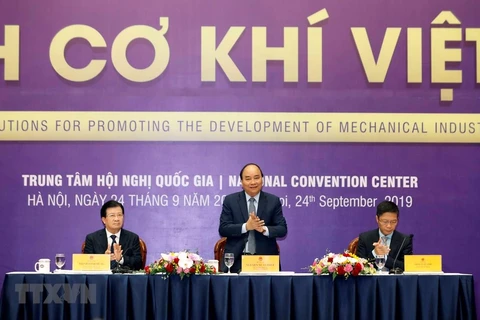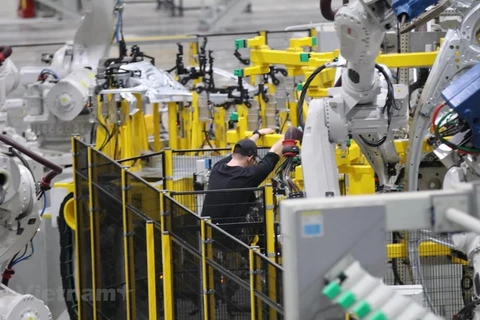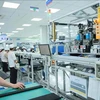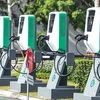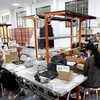Hanoi (VNA) - An assessment by the Vietnam Chamber of Commerce and Industry (VCCI) shows that currently, less than 40 percent of Vietnam’s firms can join the global supply chain.
Taken as one of the “spearheads” to push socio-economic development, yet the mechanical sector is facing numerous challenges, many of its fields are left behind in the world and fail to compete in maintaining the domestic market shares.
Risk of loss right at home
According to statistics by the General Department of Statistics, by the end of 2017, the number of mechanic firms operating with business efficiency was 25,014, occupying nearly 30 percent of the total in the field of processing and manufacturing. A number of the key industries like the automobile, motorbike and navigation mechanical machines saw a high rate of localization and many products turning to foreign markets.
However, this is still very modest. Minister of Industry and Trade Tran Tuan Anh said Vietnam mechanic products see very few domestic trademarks. With its current capacity, the mechanic field met only a little more than 32 percent of the domestic demand and it was very difficult for it to become sub-contractors providing machinery and equipment for major investment project implemented over the recent past.
The level of the manufacturing, especially precision, is from two to three generations behind that of many other countries, and that is to say the chances for them to join the mechanic value chain are very dim. An assessment by the Vietnam Chamber of Commerce and Industry (VCCI) shows that currently, less than 40 percent of Vietnam’s firms can join the global supply chain.
Meanwhile, the majority of the domestic support industry firms are of Levels 3 and 4 providing FDI companies in Vietnam with simple and low-value accessories and packaging materials.
Localisation rates of a number of industries:
According to experts, the main cause of those problems is the firms’ small scale, low competitiveness and failure to master the complete and core technologies.
Nguyen Chi Sang, Vice Chairman of the Vietnam’s Mechanical Enterprises’ Association, elaborated that many firms have low starting points and poor capacity but they make subjective investment, worsened by the absence of cooperation between consultancy firms and producers. He also added that there is an absence of connectivity between the development of socio-economic programmes, major projects and the development of engineering, while the law on auction is still loose.
To create breakthroughs from policies
On the basis of the above analysis, Sang proposed that for major investment programmes, there must be a roadmap on localization while for packages which domestic firms are not totally able to implement, then auctions should be allowed conditioned that domestic contractors establish joint ventures with foreign ones to master the technology. The State should work out preferential credit policies for investment projects that use domestically-produced goods and build technical barriers against the machines that domestic firms can produce, he added.
While the mechanic industry is developing at a snail’s speed, information technology and electronics have partially accessed the pace of Industry 4.0. That is why, in experts’ opinion, the strong points of the revolution will be measures for Vietnam to make shortcuts and narrow the development gap.
As for the Ministry of Industry and Trade, Minister Anh said it will coordinate with other ministries, authorities and associations to boost connectivity and facilitate Vietnam’s mechanic firms to join regional and international production chains. One of the important tasks the ministry is implementing is building and updating databases on mechanic firms.
Besides, export promotions for a number of priority mechanical products and the building of marketing strategies continue to be pushed up by the ministry./.
The State’s current advocate is to develop engineering and mechanic industries, especially the smart engineering industry. The goal is that by 2020, export will occupy 35 percent of the mechanic industry’s total output and this figure will be raised to 40 percent by 2030 and 45 percent by 2035.




